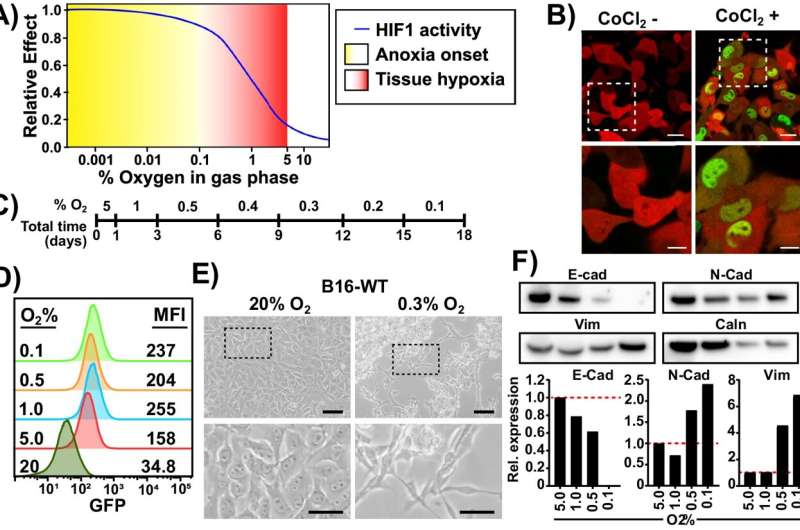This article has been reviewed according to Science X's editorial process and policies. Editors have highlighted the following attributes while ensuring the content's credibility:
fact-checked
trusted source
proofread
Novel approach to study hypoxia enables identification of a marker for ovarian cancers

In a new study, the team led by Étienne Gagnon, Professor in the Department of Microbiology, Infectious Diseases and Immunology at the Université de Montréal and Director of IRIC's Cancer Immunobiology Research Unit, has developed a cell culture protocol that accurately reproduces the characteristic conditions of primary tumors.
The group also identified a novel form of the WT1 protein associated with poor long-term survival in ovarian cancer patients. Published in the journal Cancer Gene Therapy, the study was led by doctoral student Jordan Quenneville.
The LTHY method: To reproduce hypoxic conditions in the laboratory
Hypoxia, a reduced oxygen availability, characterizes the cellular environment of many solid tumors. This characteristic contributes to the resistance of tumor cells to chemotherapy, radiotherapy and immunotherapy. Hypoxia is thus associated with a poor prognosis for patients. However, existing methods for studying hypoxia in the laboratory do not reproduce the conditions observed during tumor development.
To overcome this problem, the Gagnon laboratory team has developed a new cell culture protocol, called LTHY (for "long-term hypoxia"). This method mimics the progressive development of severe hypoxia observed in vivo. The approach developed combines both duration and severity to mimic the appearance and progression of a tumor. This novel protocol is already setting new standards, and several other IRIC groups are beginning to use it in their respective research projects.
A new marker of aggressiveness and survival?
Cells subjected to the LTHY protocol spontaneously undergo an epithelial-mesenchymal transition (EMT), making them invasive and eventually leading to metastasis. At the start of this transition, the cultured cells produce a truncated form of the WT1 protein, known to promote EMT and the development of cancer.
The team also discovered that this new form is derived from an intronic portion of the WT1 gene, a region not normally used for protein production. The resulting product, in addition to being truncated, therefore contains an unconventional protein sequence, known as cryptic. The truncated form of WT1 remains functional and binds to several genes involved in EMT.
Although identified in several human cancer samples, this form of WT1 is particularly present in ovarian cancers, which are known to be hypoxic. Moreover, its presence in this type of cancer is associated with poor long-term survival for patients. Thus, the truncated form of WT1 could become a new marker for predicting aggressiveness and survival in ovarian cancer.
More information: Jordan Quenneville et al, Long-term severe hypoxia adaptation induces non-canonical EMT and a novel Wilms Tumor 1 (WT1) isoform, Cancer Gene Therapy (2024). DOI: 10.1038/s41417-024-00795-3



















